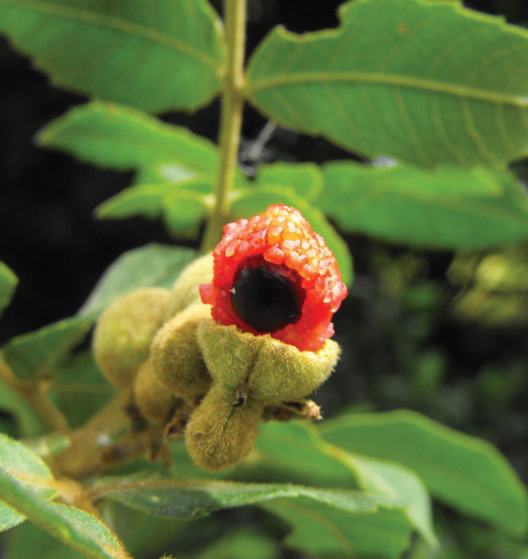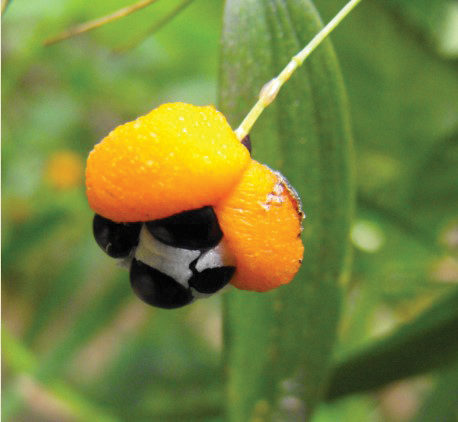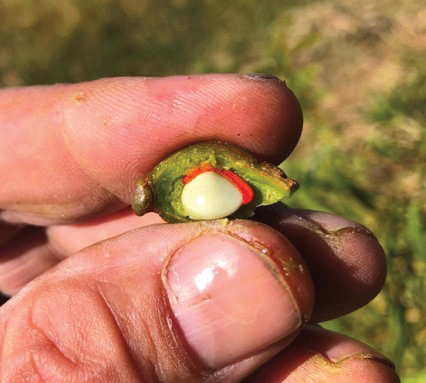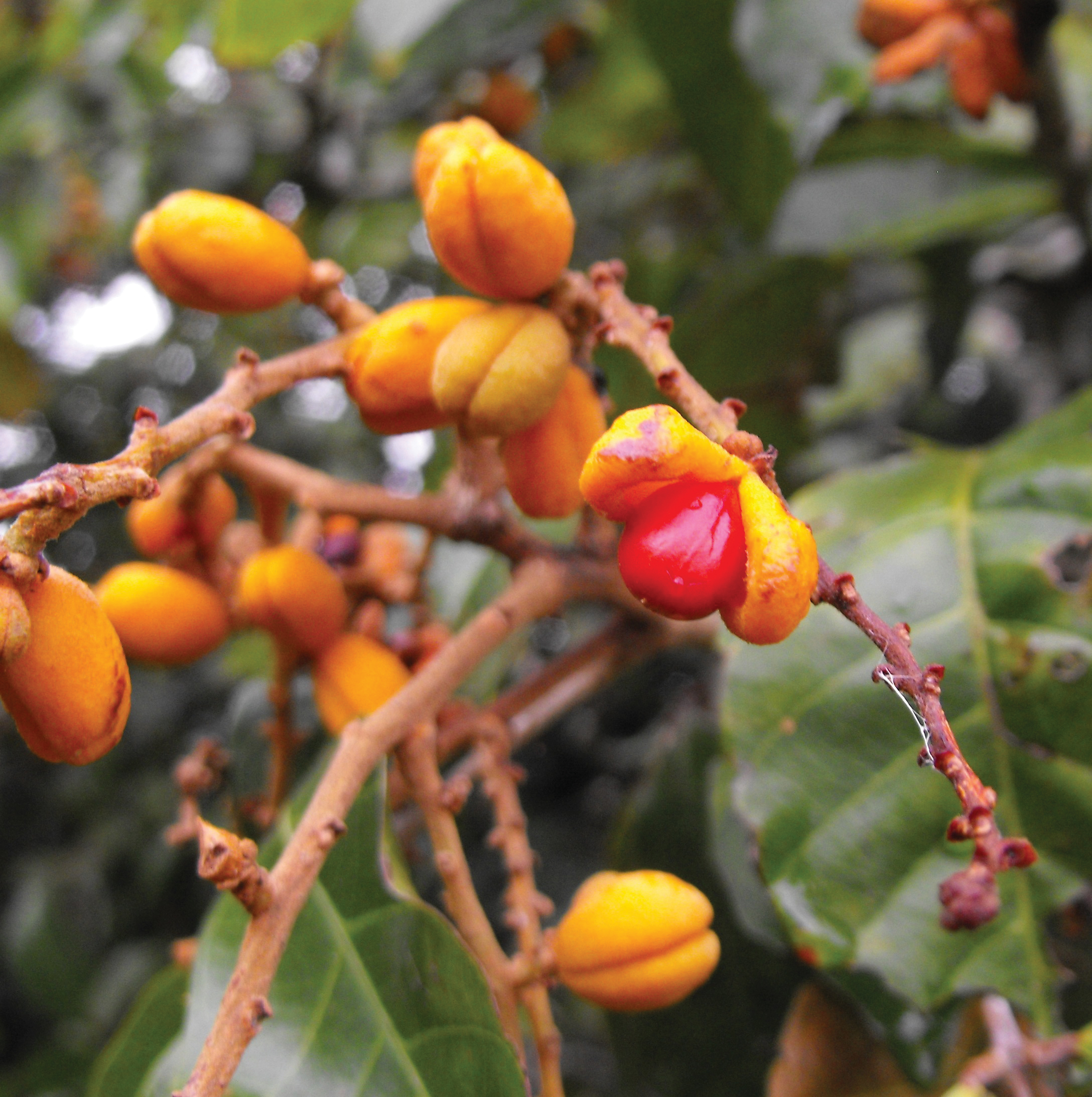Allow me to introduce you to arils. Not only are they important in encouraging the distribution of seeds, they can also be colourful and fascinating to look at or photograph.
Arils are specialised structures that grow out from a seed. They can cover the seed either fully or partially. Arils are often brightly coloured to attract birds and other animals and are often fleshy and edible, which again, entices wildlife to eat it. To eat an aril, an animal also needs to eat the seed as the aril and seed are stuck together. The animal then digests the aril, but defecated out the seed, thereby helping the plant disperse its fruit.


A white aril surrounds black seeds – all within the yellow/ orange fruit of Wombat Berry (Eustrephus latifolius).An aril is basically a reward that the plant offers to the bird, or other animal, to eat its seed. The great thing for the plant is that many seeds germinate more readily if they have been passed through the gut of an animal. Acids in the gut of wildlife help break down hard seed coats, and the animal deposits the ‘treated’ seed in a nice pile of fertiliser (dung) ready for germination.
Some fruits that we eat, such as lychee and pomegranate, are actually arils. Botanically, there are many different types of fruit but, in general, wildlife see fruits in two broad categories – berries and a pod containing a seed with an aril (an ‘arillate seed’). A berry develops directly from a plant’s ovary and has no hard pod. Whereas both the seed and aril grow out from an ovule (found within the ovary). Both the seed and aril are usually enclosed in a tough, woody or hairy pod. When the seed matures, the pod splits open revealing a ripe seed with an aril. Arils and pods are often different colours making the arils more conspicuous to wildlife.


Next time you see one of your native trees fruiting, take a closer look to see if it is a berry-type fruit (e.g. Celerywood, Polyscias elegans or Scrambling Lily, Geitonoplesium cymosum), or if it is a fruit with an arillate seed, such as wattles and many species within the Sapindaceae family such as tamarinds (Diploglottis spp.), coogeras (Arytera spp.) and tuckeroos (Cupaniopsis spp).
Article by Martin Bennett and Deborah Metters
Photos by Martin Bennett
Land for Wildlife Officer
Lockyer Valley Regional Council
Reference
Skutch, AF (1980) Arils as food of tropical American birds. Cooper Ornithological Society 82: 31-42.
